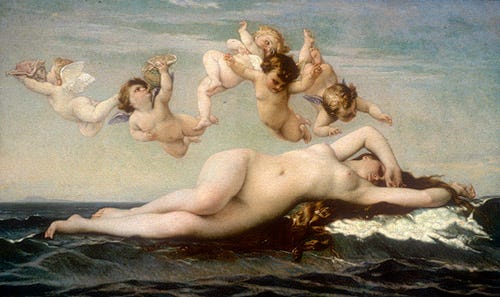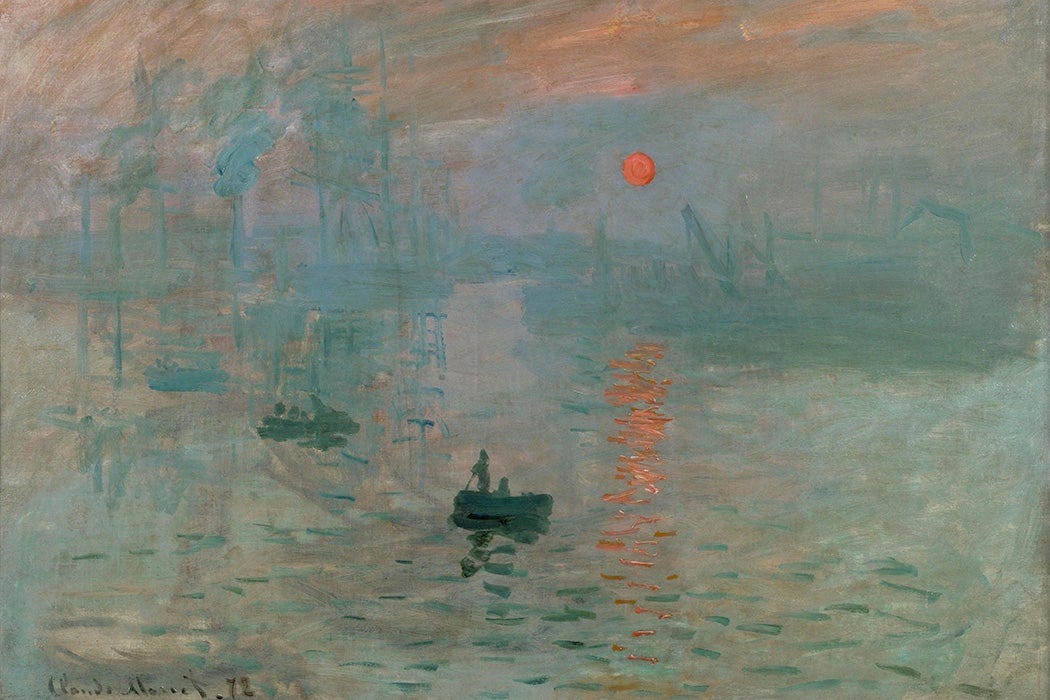I knew as soon as I hit send that the last post was a bit undercooked.
What I meant to say was…
It's eerie how similar AI art is to the academic art of the 19th century. I know AI art comes in different flavors but there seems to be a certain style that is now found everywhere. It has the same slickness, the same gauzy light, the same uncanny vapidity and maybe most importantly, the same obsession with boobs.
And, as I tried to say, It’s bad, but you can’t say its terrible. What you can say, and what they did say at the time is, it’s a little soulless.
“Of course you think that, you’re a painter, you’re just mad that you’re obsolete.”
Maybe, but if that’s true, I’ve been obsolete since the 1860s! While academic salon art was good enough to capture the public’s attention for a while, it ultimately crashed and burned long before ChatGPT. What replaced it was painting that was very very “bad.”
It’s hard to imagine how revolutionarily bad this was in 1909. I mean look at it- it’s frickin’ terrible. But its also so damn liberating that its practically unbearable. And then imagine seeing it at the original huge size. It makes you wanna run outside and commit a crime or quit your job or hug your wife or something.
But this new art also shared one more thing with AI art- it stole. It stole from the many different cultures whose art was pouring into Paris (and Berlin, etc) through the colonial system. And what the artists saw in these works was something besides their own emptiness: they saw connection, participation, meaning - soul. They saw something they knew their culture no longer had. This was a subtle but persistent existential crisis. You could even call it pain. Nietzsche saw it, as did Freud, and Blake, and Elvis and Dylan and David Byrne and Eminem and many others (including non-white dudes too, lol).
People like to think modern art was in a competition against technology like photography (or now AI), but the real impulse for it was actually completely different. For instance, this painting below (Monet, Impression, Sunrise,1872) is widely considered the beginning of impressionism and maybe even Modernism itself. Far from running from photography, it both looks and acts more like a 19th century photo than any academic painting. Artists weren’t running from photography, they were running towards it.
Why go from academic art to this? Or Matisse? Because they were sick of AI already by the 1870s. They wanted something else. Something real.
Of course, figuring out what that means was harder than they thought. And modern art is full of failed experiments and, as we all know by now, tons of really horrible racist and other ideas. You can still go through a museum and enjoy it as a string of profoundly human, beautiful and tragic failures. Think of them like love affairs. All that means is that the question still hasn’t been answered yet, our pain is still there. Were you expecting anything else?
But there’s another problem with AI. Like academic art, its dangerous. The rift between Modernism and Academic art spawned an entirely new category- kitsch. I don’t wanna open up that can of worms, but kitsch wasn’t just boring or soulless, it implied a child-like inability to confront anything involving nuance or discomfort. Even a hostility to it.
As we look around today, it’s impossible to divorce AI’s overwhelming and infantilizing kitsch from the dangerous refusal of awareness in general out there. It’s that same glazed look in their eye. I’ll spare you the images, you know what I mean.
How to fix this? I think you have to teach people history. And psychology. And art. And literature. And have them argue about it. And do enough of all of it so that they see that their understanding of the world is not as normal and natural as they think. This is not always fun, and it certainly isn’t popular, but it is as true for us today as it was for Socrates and no political trend is going to change that. Childish fantasies will always be childish fantasies. There is no shortcut to growing up. It is almost always painful. And if it involves the development of humility and empathy in exchange for a delusional and limitless self-confidence, so be it.
And besides, when was the last time you used pre-calculus? If we can teach that, we can teach this. If our schools won’t do it, then its at least something us out of work artists and musicians can do.










“But it’s also so damn liberating that it’s practically unbearable.” Thank you for that.